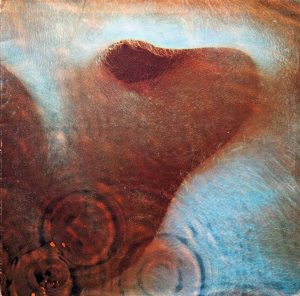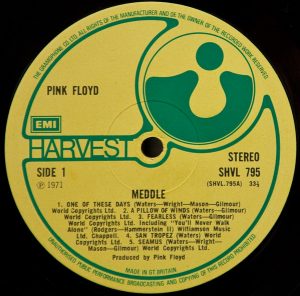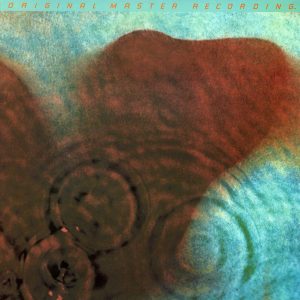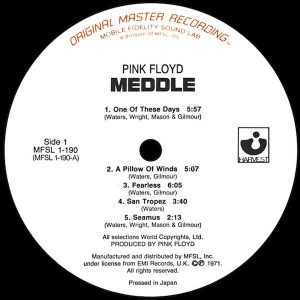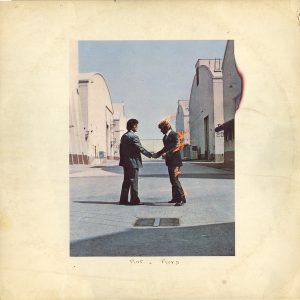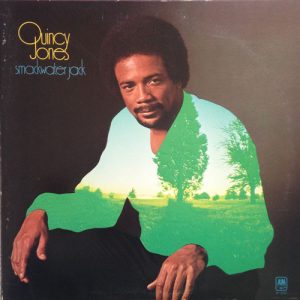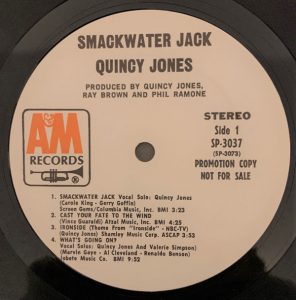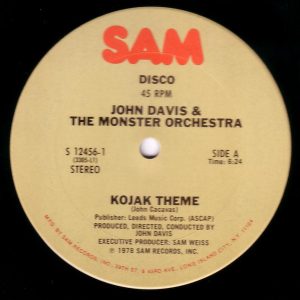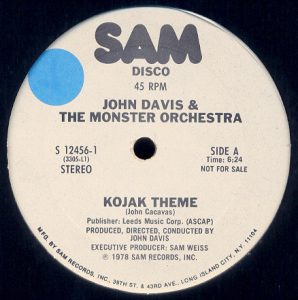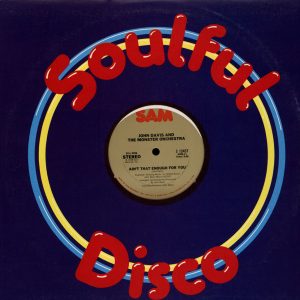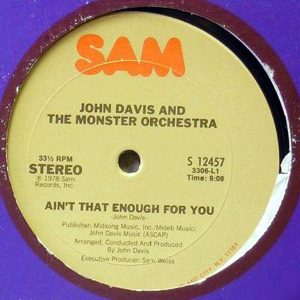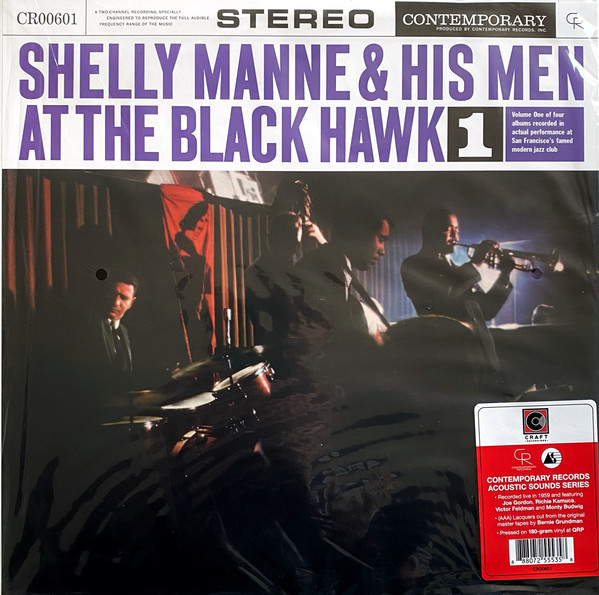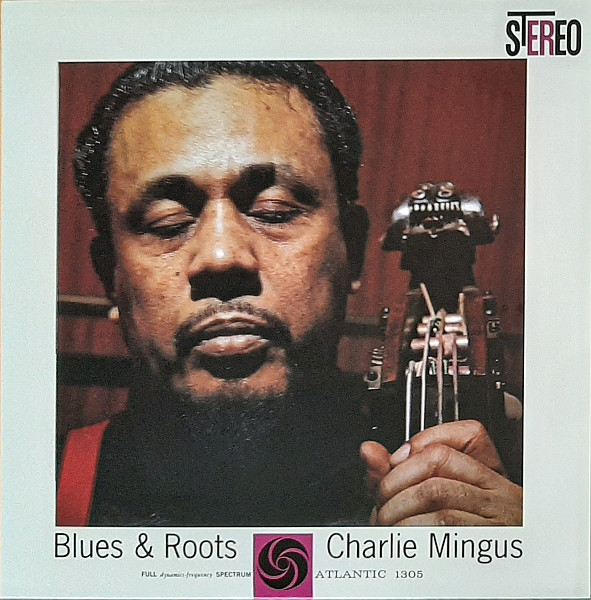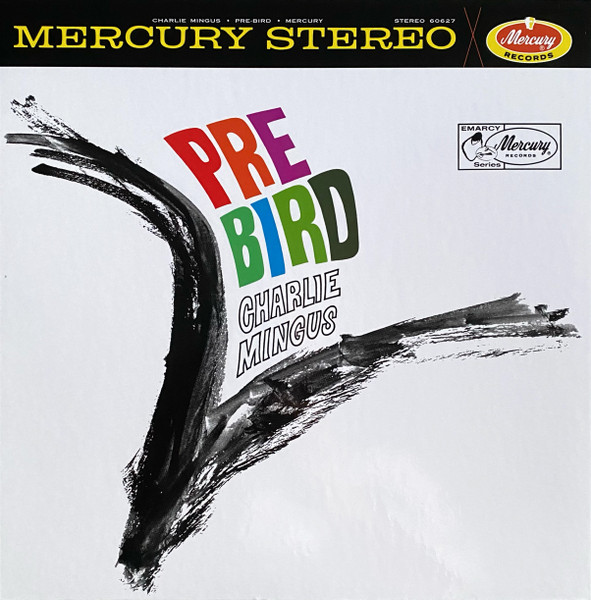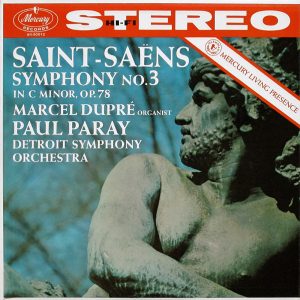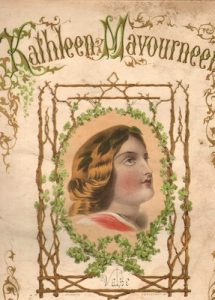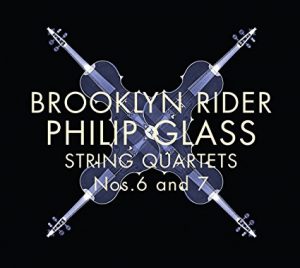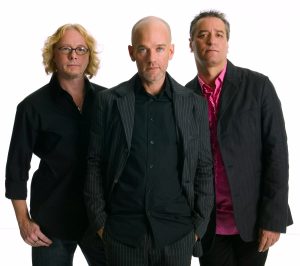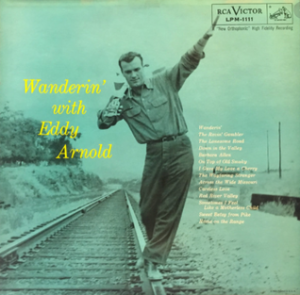This is an ongoing project by Claude Lemaire of Soundevaluations
171. Pink Floyd, Meddle. Harvest – SHVL 795, IE 064 o 04917 (UK) (1971), MoFi – MFSL 1-190 (1984), 33 1/3 rpm. Genre: psychedelic, progressive, experimental rock, heavy rock, art rock, folk rock, acoustic rock, roots rock, space rock, ambient.
Meddle may be considered the bridge between the band's prior psychedelic period initiated in 1967, and their most successful middle period progressing from 1973's DSOTM up to The Wall in 1979—the final LP featuring four of the five originals. The opening track stirs up a storm with "One of These Days." Mixing double tracked basses, dissonant keyboards, distorted guitars, psychedelic sounds, with proto-prog metal vibes, it remains one of the heaviest compositions from the quartet save for "The Nile Song" found on their 1969 soundtrack More. Repetitive, and nearly-instrumental, be it not for Nick Mason's brief modulated vocal line inserted at the 3.40 mark, foreshadowing a glimpse of death metal's vocal style delivery. The following four songs of side A stand apart from the rest of the album being deeply rooted in soft, acoustic, folk, and roots music. Side B carries the 23 minute, ambient, spacey "Echoes." Fittingly it starts with Floyd's famous 'ping' note played by Richard Wright's piano sent through a Leslie speaker and—no surprise—an echo machine made by Binson in Italy. David Gilmour's slide guitar soon adds its voice while the organ and softly played bass, slowly fills the background, bringing a relaxing, meditative mood. Then both men sing in harmony creating that unique Pink Floyd signature sound that will echo through timeless pieces such as "Breathe" or "Us and Them" found on their following masterpiece album (see 82 HERE). That mood drastically shifts seven minutes into the piece where it veers into a funky fusion like improvised instrumental locked groove. At the exact midpoint it metamorphoses once more into a haunting, horror like atmosphere, featuring seagull screeching guitar wails that would sit well in a UFO moon base episode. Around 16 minutes in, the organ serves as a sound bed while a rhythmic pulse provided by bass and muted guitar gradually fades in, similar to Tangerine Dream's music around that same period. Self-produced; engineers John Leckie and Peter Brown recorded at Air Studios and EMI Abbey Road Studios while engineers Rob Black and Roger Quested recorded at Morgan Studios—all three located in London, between January and August 1971. The original UK LP was pressed by The Gramophone Co. Ltd. in Hayes Middlesex, England. I don't have the latter but do have a 1974 EMI second pressing. The sound is generally excellent. I once heard the 1984 MoFi reissue pressed in Japan by JVC many years ago, and based on vague memory, it was excellent as well, but can't recall any comparative details.
172. Pink Floyd, Wish You Were Here. Harvest – SHVL 814 (UK) (1975), 33 1/3 rpm. Genre: art rock, blues rock, progressive, electronic, experimental rock, funk rock, fusion.
Pulling off a musical masterpiece can be a double-edge sword for any artist or band. On the one hand, you are praised by the press and can rejoice in fulfilling your dream, but what do you do for an encore without letting down your fans, yourself, and the menacing music critics. That was the conundrum facing the Beatles with Sgt. Pepper, Marvin Gaye with What's Going On, and yes, Pink Floyd with DSOTM. Wish You Were Here, released two and a half years later, tries to answer that question. We should give the quartet credit for not trying to repeat the same winning formula with this release which would have been tempting for some groups. Does it live up to its predecessor? Probably not, but I believe it is still up there in the top-tier or top three Floyd albums in musical creativity, and sound quality. Side A certainly delivers on both fronts, opening with "Shine On You Crazy Diamond (Parts I to V)"—an homage to former member Syd Barrett. It starts off with a long fade in of a minor chord played on a synth sounding exceedingly pure—thanks in part to a DI unit—later augmented by bluesy electric guitar, leading to the signature 'four-note' riff, soon followed by drums and bass providing a typical 6/8 blues rock rhythm. Saxophonist Dick Parry—who previously played on "Money" and "Us and Them"—lends a hand, first on baritone, and then tenor. After 13-minutes it segues into "Welcome to the Machine." Its intro is quite original, comprising industrial and electronic sound effects—provided by a EMS VCS 3 analog synth—transporting us to what could pass as a futuristic manufacturing plant or some sort of sci-fi doomsday machine living and breathing steam, pulsating to the meter left and right. Then the acoustic guitar strums three times with a fourth strum accompanied by Gilmour's double tracked vocals. The latter were "tape-speed-manipulated" lending them an eerie distressing effect. An instrumental ascending scale climaxes to C major seventh representing an exultant high pitched synth. It ends with an air raid siren, closely followed by crowd noises recalling the intro to Sgt. Pepper and would make a seamless mix by the way. Side B starts with the weaker track of the album in my opinion, "Have a Cigar," which fits a bit in the mold of "Money," being a strange mixture of funk and rock—it would be turned into a funky disco single by Rosebud in 1977 [Atlantic ATL 20 155 or Warner Bros. WB8784] which I find superior to the original. Strangely it is not sung by either Gilmour nor Waters, but rather Roy Harper. It continues with the title track, and ends with the mostly instrumental "Shine On You Crazy Diamond (Parts VI to IX)" that alternates between blues rock and fusion. The combination of art rock, electronic instruments, and experimentation would leave its mark on groups such as Radiohead in the 1990s. Self-produced; engineer Brian Humphries assisted by Peter James recorded at Abbey Road Studios in London between January and July 1975, and was released in September. I don't have the original UK but do have a first or second German pressing [Harvest, EMI Electrola 1 C 062-96 918]. The sound is excellent and refined, tending towards pure and detailed, typical of mid-1970s German pressings. Regardless of the pressing country, a must for Pink Floyd fans.
173. Quincy Jones, Smackwater Jack. A&M Records – SP-3037 (promo), A&M Records – SP-3037 (Can.) (promo) (1971), 33 1/3 rpm. Genre: cinematic soul, soul-jazz, jazz-funk, big band, swing, Kansas City jazz, R&B, soul blues, country blues, jazz rock fusion, free form.
Quincy Jones is one of the rare artist to master such many branches of the music industry; this going back to the 1950s. Musician, songwriter, composer, arranger, film and television scoring, and of course producer—best known for his work on Michael Jackson's 1979 solo breakthrough Off the Wall and most importantly the mega-selling Thriller in 1982. Smackwater Jack released in October 1971 may not ring a bell with many listeners but it does feature the opening theme music of one of television's iconic crime dramas—Ironside, starring Raymond Burr from 1967 to 1975—as well as "Theme from The Anderson Tapes" in relation with the 1971 movie starring Sean Connery. A third original composition co-written with comedian Bill Cosby is the brassy jazz-funk single "Hikky Burr" which served as the theme song for The Bill Cosby Show that aired for two seasons starting in 1969. The final Jones composition and closing track—"Guitar Blues Odyssey: From Roots to Fruits"—is an odd disjointed instrumental track that switches from country blues to Kansas City Jazz to swing to ballad to R&B to jazz rock fusion to free form as if one is skipping between FM radio stations. The title track is a Carole King original taken from her breakthrough album Tapestry released only nine months prior to Jones' own. He gives it a totally different twist, presented in a cinematic soul style that would fit perfectly in a blaxploitation movie, and for which I prefer to King's original. He reprises also Marvin Gaye's "What's Going On" released the same month as the latter with a very interesting interpretation, as well as Vince Guaraldi's 1962 hit single "Cast Your Fate to the Wind." Comprising over forty musicians, it is arranged by Marty Paich and Quincy. He is joined by Ray Brown and Phil Ramone for production credits. The latter with engineering assistants George Clabin, John Curcio, and Tommy Vicari recorded them at A&R Studios, and Sound Ideas Studios both in New York City. I do not have the original US promo pressed by Columbia Records Pressing Plant, Terre Haute in Indiana but have instead the Canadian first press promo, lacquer cut by Alain Lalancette aka Alain DeRoque probably in Montreal, Québec, Canada. The sound is incredibly good, tonally well balanced with impressive bottom end weight, incredibly dynamic for the genre, and I wonder whether the US could really surpass it given its many strengths.
174. John Davis & The Monster Orchestra, "Kojak Theme"/"Whatever Happened to (Me and You)". Sam Records – S 12456-1 (1978), 12", 45 rpm. Genre: disco, Philly Sound, funky disco.
Continuing in the vain of funkified television theme music, John Davis & The Monster Orchestra came out in 1978 with their disco version based on the action crime drama tv series Kojak, which aired for five years premiering in 1973. There were in fact two different title theme tracks depending on which season of the show. The first was scored by Billy Goldenberg while the second was by John Cacavas—the one used here. Davis was part of Gamble and Huff's MFSB, the house band forming the Philadelphia Sound, and also arranged and conducted a few Carol Douglas hits. His first release in 1976, accompanied by The Monster Orchestra, was Night & Day [Sam Records LP 700]—paying tribute to Cole Porter. The following year turned up the heat with "Up Jumped the Devil"/"You Got to Give It Up" [Sam Records S-12452]. This is his seventh single release. As is often the case underlying his many productions, the funky Philly arrangements give this instrumental track on twelve inch single format an energetic drive. Side B features "Whatever Happened to (Me and You)" which is as good as the main track but drops the funky element for straight melodic disco with smooth harmonious female vocals; just unfortunate that it's a bit short in duration lasting just under four minutes. Sam Weiss was the executive producer for the label bearing his name. Both tracks are produced, arranged, and conducted by Davis. Engineer Ken Present assisted by Jeff Stewart and "My Rock" Schnarz recorded it. Nimitr Sarikananda mastered it at Frankford/Wayne Recording Labs in Philadelphia, PA. The sound is excellent with tight bass, fine brass crunch, and treble detail typical of most of his releases.
175. John Davis & The Monster Orchestra, "Ain't That Enough For You"/"A Bite of the Apple". Sam Records – S 12457 (1978), 12", 33 1/3 rpm. Genre: disco, Philly soul.
Released in September 1978 right after "Kojak," "Ain't That Enough For You" remains Davis' biggest hit receiving its fare share of airplay on the radio and in discothèques. At 131 bpm it was considered quite fast for the times along side tracks by Patrick Adams' group Musique, and Sylvester's Hi-NRG hits late that summer. This is a great up-tempo disco classic with a touch of Philly soul in the smooth strings and lush arrangements, but less funky for the formation than previous releases. What is particularly fun for deejays is the generous use of long conga and percussive parts throughout the song—intro, break, buildup, breakdown, and outro—facilitating mixes with other disco tracks, such as a seamless mix with Montana's "You Know How Good It Is" [Atlantic DSKO 149 promo]. Jimmy Walker and Larry "B" Washington's percussion, Vince Fay's bass, Craig Snyder's guitar, Don Renaldo's strings and horns, and of course, Davis' keyboard-piano main riff propel the tune forward. Side B's "A Bite of the Apple" did not get as much attention at the time; it is less memorable but still quite good and is as fast if not more so. It includes a few Spanish-guitar licks and trumpet in the intro and later on respectively. Once again, Sam Weiss was the executive-producer. Both tracks are produced, arranged, and conducted by Davis. Engineer Ken Present assisted by Jeff Stewart and "My Rock" Schnarz recorded it. Nimitr Sarikananda mastered it at Frankford/Wayne Mastering Labs in New York. The sound is truly great, even above-average for the genre, with perfect tonal balance, punchy kick drum with solid bass and piano, crisp conga and guitar, defined and warm strings, superb soundstage, appropriate dynamics, and just the correct level of top end detail.
For more from Claude Lemaire go to his blog...
http://soundevaluations.blogspot.ca/




